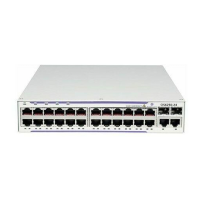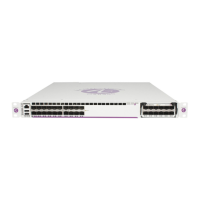QoS Policies
7210 SAS D, E, K OS Quality of Service Guide Page 35
Meter Parameters
Note: Only 7210 SAS-E and 7210 SAS-D supports meters on SAP ingress and access-uplink port
ingress.
This section describes the meter parameters that can be defined for meters provisioned on the
service entities (For example: SAP ingress on 7210 SAS-D).
NOTE: Not all 7210 platforms support meters for all the policies. In addition, the meter
parameters supported varies across platforms. See platform specific QoS overview sections above.
In the sections below, the differences are called out explicitly to know the support available on
different platforms.
The meter parameters are:
• Meter ID on page 39
• Committed Information Rate on page 39
• Peak Information Rate on page 40
• Adaptation Rule for Meters on page 40
• Committed Burst Size (For Meters/Policers) on page 41
• Maximum Burst Size (For Meters/Policers) on page 42
• Meter Counters on page 42
• Meter Modes on page 42
Meter ID
The meter ID is used to uniquely identify the meter. The meter ID is only unique within the
context of the QoS policy within which the meter is defined.
Committed Information Rate
The committed information rate (CIR) for a meter is the long term average rate at which traffic is
considered as conforming traffic or in-profile traffic. The higher the rate, the greater the
throughput user can expect. The user will be able to burst above the CIR and up to PIR for brief
periods of time. The amount of burst is determined by the CBS and MBS values configured for the
meter.
When defining the CIR for a meter, the value specified is the administrative CIR for the meter. The
7210 SAS devices have a number of native rates in hardware that it uses to determine the
operational CIR for the meter. The user has some control over how the administrative CIR is

